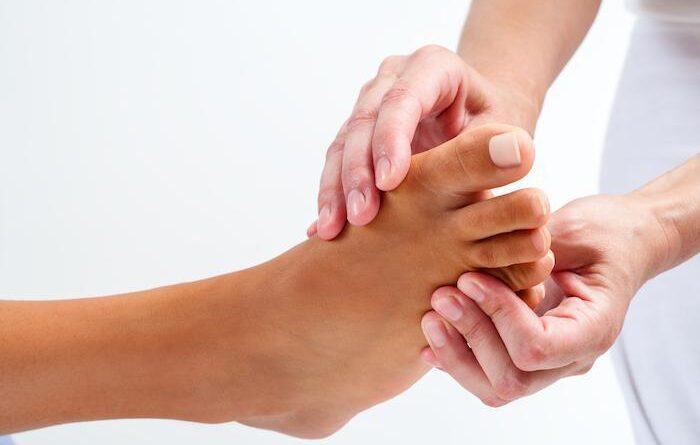Metatarsalgia is a condition in which the ball of your foot becomes painful and inflamed. You might develop it if you participate in activities that involve running and jumping. There are other causes as well, including foot deformities and shoes that are too tight or too loose.
Although generally not serious, metatarsalgia can sideline you. Fortunately, at-home treatments, such as ice and rest, often relieve symptoms. Wearing proper footwear with shock-absorbing insoles or arch supports might prevent or minimize future problems with metatarsalgia.
Symptoms
Symptoms of metatarsalgia can include:
- Sharp, aching or burning painin the ball of your foot — the part of the sole just behind your toes
- Pain that worsenswhen you stand, run, flex your feet or walk — especially barefoot on a hard surface — and improves when you rest
- Sharp or shooting pain,numbness, or tingling in your toes
- A feeling ofhaving a pebble in your shoe
Causes
Sometimes a single factor can lead to metatarsalgia. More often, several factors are involved, including:
- Intense training or activity.Distance runners are at risk of metatarsalgia, primarily because the front of the foot absorbs significant force when a person runs. But anyone who participates in a high-impact sport is at risk, especially if your shoes fit poorly or are worn.
- Certain foot shapes.A high arch can put extra pressure on the metatarsals. So can having a second toe that’s longer than the big toe, which causes more weight than normal to be shifted to the second metatarsal head.
- Foot deformities.Wearing too-small shoes or high heels can cause your foot to be misshapen. A downward-curling toe (hammertoe) and swollen, painful bumps at the base of your big toes (bunions) can cause metatarsalgia.
- Excess weight.Because most of your body weight transfers to your forefoot when you move, extra pounds mean more pressure on your metatarsals. Losing weight might reduce or eliminate symptoms.
- Poorly fitting shoes.High heels, which transfer extra weight to the front of your foot, are a common cause of metatarsalgia in women. Shoes with a narrow toe box or athletic shoes that lack support and padding also can contribute to the problem.
- Stress fractures.Small breaks in the metatarsals or toe bones can be painful and change the way you put weight on your foot.
- Morton’s neuroma.This noncancerous growth of fibrous tissue around a nerve usually occurs between the third and fourth metatarsal heads. It causes symptoms that are similar to metatarsalgia and can also contribute to metatarsal stress.
Risk factors
Almost anyone can develop metatarsalgia, but you’re at higher risk if you:
- Participate in high-impact sportsthat involve running and jumping
- Wear high heels, shoesthat don’t fit properly or shoes with spikes, such as cleats
- Are overweightor obese
- Have other foot problems,including hammertoe and calluses on the bottom of your feet
- Have inflammatory arthritis,such as rheumatoid arthritis or gout
Treatment
At Alimran Medical Center, we may recommend any of the following treatments
Regenerative medicine treatment (Prolotherapy)
- Electrical stimulation
- Short and long wave
- Laser therapy
- Ultrasonic therapy
- Magnatic therapy
- Exercises
Chiropractic

